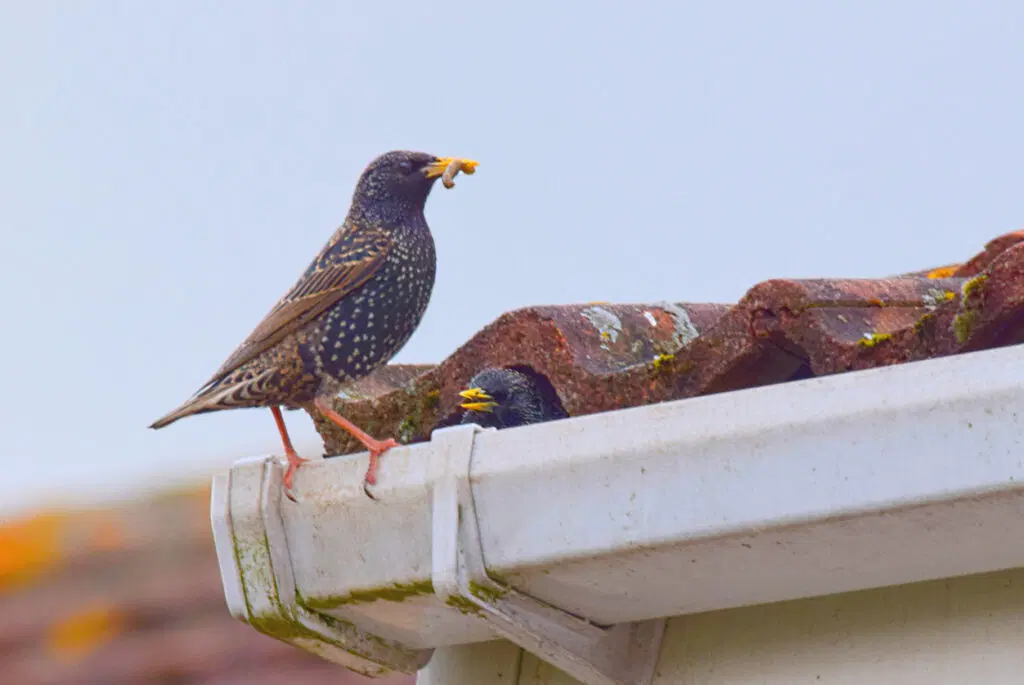Finding a bird trapped in your garage can be both alarming and frustrating. The situation may seem harmless, but birds can become highly stressed, confused, and even injured when they can’t find a way out. Your first instinct might be to panic or chase it out, but this can often make things worse for both you and the bird. Instead, there are several humane and effective methods that can safely guide the bird out of your garage without causing harm. This guide will walk you through the best strategies to achieve that goal, ensuring a stress-free process for both parties.
Understanding Why Birds Get Stuck in Garages
Before jumping into solutions, it helps to understand why birds end up in garages in the first place. Birds, particularly species like sparrows, robins, or pigeons, may accidentally fly into open spaces like garages while searching for food or shelter. Bright lights or the reflection of windows can also confuse them. Once inside, the bird may struggle to navigate out, especially if the garage is cluttered or has limited natural light.
By understanding how birds get disoriented, we can better develop ways to help them find their way back outside.
First Steps: Stay Calm and Assess the Situation
When you discover a bird in your garage, the first thing to do is to stay calm. Birds are very sensitive to their surroundings, and any sudden movement or loud noise could startle them, making them fly erratically. Start by taking a moment to observe the bird’s behavior and location.
Once you’re composed, close the interior doors leading to your home. This prevents the bird from flying deeper into the house, making the removal process much more difficult.
Clear a Path for the Bird
One of the simplest ways to encourage a bird to leave the garage is by creating a clear exit path. This strategy works because birds naturally follow light sources when searching for an escape route.
- Open the largest door: If your garage has a large overhead door, open it as wide as possible. The bird will be more likely to see the outside light and make its way toward it.
- Turn off indoor lights: Bright indoor lights can confuse the bird, causing it to fly towards them instead of the exit. Turning off or dimming these lights will help the bird focus on the natural light from outside.
- Remove obstructions: Clear out any obstacles between the bird and the open door. This could include bikes, tools, or stored items that may block the bird’s flight path.
Patience is key here. The bird may not fly out right away, especially if it’s stressed. Give it time to calm down and orient itself.
Use Visual Cues to Direct the Bird Out
If simply opening the garage door isn’t working, you may need to use some gentle persuasion. Here are a few methods you can try to coax the bird towards the exit:
- Create a light source near the exit: If the bird seems confused or hesitant, try placing a bright light source just outside the open door. This could be a flashlight or a lantern. The bird is likely to be drawn toward the light, helping it find its way out.
- Wave a towel or cloth near the bird: Standing a safe distance away, slowly wave a towel or sheet in the air near the bird. This movement can gently encourage the bird to move away from you, hopefully towards the open door.
Give the Bird Time to Escape
It’s important not to rush the bird. In some cases, the bird might be too disoriented or stressed to fly out right away. Give it some time to relax, and make sure to remain quiet and still. If you leave the garage door open, the bird may eventually make its way out on its own once it feels safe enough to do so.
Trapping the Bird: A Last Resort
If all else fails, and the bird doesn’t leave after several hours, you might need to gently trap and release it. This should only be done as a last resort and with extreme care to avoid injuring the bird.
Here’s how you can do it:
- Use a large towel or blanket: Quietly approach the bird and toss a lightweight towel or blanket over it. The material should be soft and large enough to cover the bird without hurting it.
- Gently scoop the bird: Once the bird is covered, gently scoop it up with both hands, being careful not to apply too much pressure. Birds are fragile, and squeezing too hard can harm them.
- Release the bird outside: Carefully carry the bird outside and remove the towel. It should fly away quickly, especially if it was unharmed during the capture.
Preventing Future Bird Incidents
After successfully getting the bird out, the next step is to ensure it doesn’t happen again. Garages are often appealing to birds, but there are ways to make them less inviting.
- Keep doors closed: One of the most effective ways to prevent birds from flying into your garage is to keep the doors closed when not in use.
- Install bird deterrents: You can place bird deterrents like reflective tape, wind chimes, or even fake owls around the exterior of your garage. These items can help scare off birds and prevent them from entering.
- Seal small entry points: Birds can sometimes enter through small gaps or vents. Be sure to seal any openings or cover vents with wire mesh to prevent birds from getting inside.
What Not to Do
There are a few things you should avoid when trying to remove a bird from your garage. These actions could harm the bird or cause unnecessary stress:
- Don’t chase or swat at the bird: Trying to physically catch or chase the bird around the garage can easily injure it. Birds can collide with walls, windows, or other objects in a panic, leading to serious harm.
- Avoid using loud noises: Blasting loud music or using a horn to scare the bird might seem like a quick solution, but it’s more likely to cause the bird to panic, increasing the chance of injury.
- Don’t leave the bird trapped for too long: While it’s important to give the bird time to leave, don’t leave it trapped in the garage overnight. Birds can become dehydrated or exhausted, especially if they’re unable to find food or water.
When to Call a Professional
In some cases, it may be necessary to call a wildlife expert or bird rescue service. If the bird appears injured, or if it’s a protected species, it’s best to leave the removal to a trained professional. They’ll have the tools and knowledge to safely rescue the bird without causing further harm.
How to Get a Bird Out of Your Garage
If you’re dealing with a bird stuck in your garage, it’s essential to approach the situation with care and patience. Start by opening all possible exit points and turning off indoor lights to guide the bird towards the outdoors. If needed, use gentle tactics like waving a towel or creating a bright light near the exit. Most importantly, stay calm and give the bird time to find its way out.
FAQs
1. How long does it take for a bird to leave a garage?
Ans – It can take anywhere from a few minutes to a few hours for a bird to find its way out, depending on how stressed or disoriented it is.
2. Is it safe to catch a bird with my hands?
Ans – Catching a bird with your hands should be a last resort. If you must, use a towel to avoid harming the bird.
3. Why do birds get stuck in garages?
Ans – Birds often enter garages while searching for food or shelter. They can become trapped if they’re unable to locate the exit.
4. Can birds see in the dark?
Ans – Birds have poor night vision compared to humans. Turning off indoor lights and relying on natural daylight will help guide them outside.
5. What kind of light attracts birds?
Ans – Natural sunlight is the best light to guide birds out. You can also use bright, artificial light placed near an open exit to attract them.
6. Should I feed a bird trapped in my garage?
Ans – It’s not necessary to feed the bird. Focus on providing a clear exit path so it can leave quickly.
Conclusion
Removing a bird from your garage doesn’t have to be a stressful ordeal. By staying calm and following these simple steps, you can safely and humanely guide the bird back outside. Remember to close your garage door when not in use to prevent future incidents, and if necessary, call a wildlife expert to assist with removal.



